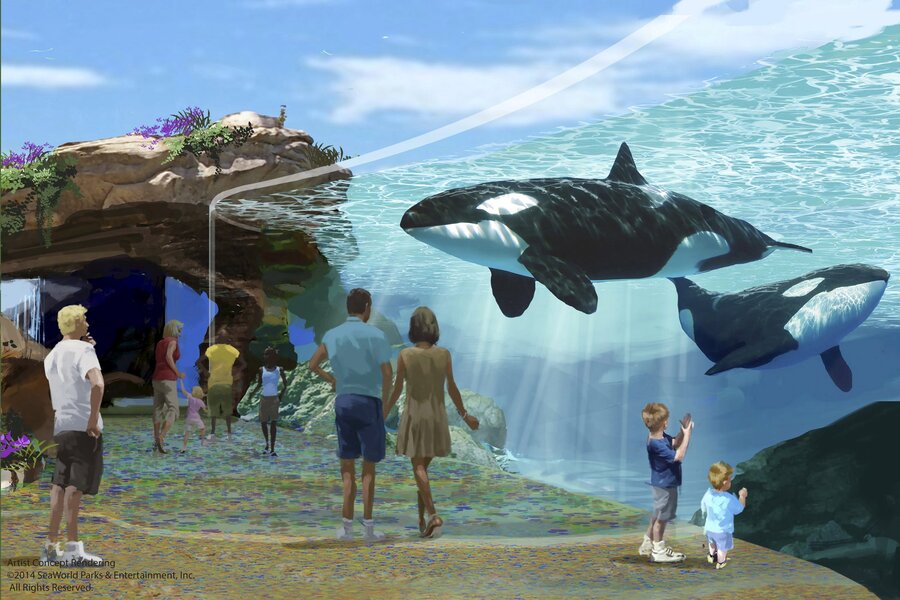Should Sea World be allowed to breed orcas?
Loading...
SeaWorld San Diego can build its new orca tank, but it can no longer breed them.
That's Thursday's ruling by the California Coastal Commission on the theme park's Blue World Project, a $100 million project to expand the San Diego orcas’ tank from 5.8 million-gallons to 9.6 million-gallons. SeaWorld says these new tanks, which are set to open in 2018 and would span 1.5 acres and measure 50 feet deep, would benefit both the park’s visitors and the captive orcas.
“The whales will want to explore and use the entire pool to swim, dive and play,” Mike Scarpuzzi, SeaWorld San Diego’s vice president of zoological operations, said in a statement. “It will also allow our guests to see the whales exhibit natural behaviors throughout the day.”
But not all natural behaviors. One condition of the commission's approval is that there will be no breeding in the new tanks. The state’s coastal commission, which has jurisdiction over all construction along California’s shoreline and therefore final say on the project, received 50,000 letters and 200,000 emails from the public about the potential construction.
“We are disappointed with the conditions that the California Coastal Commission placed on their approval of the Blue World Project, and will carefully review and consider our options,” John Reilly, the Sand Diego park president, said in a statement. “Breeding is a natural, fundamental and important part of an animal’s life and depriving a social animal of the right to reproduce is inhumane.”
David Watson, SeaWorld’s attorney, argued that the commission lacks legal jurisdiction to limit the company’s breeding plans, because all marine mammals in captivity are regulated by the federal, not state, government.
The breeding ban includes natural reproduction, as well as calves that would have been born from artificial insemination. The ban also stipulates that no new whales from the wild can be caught and kept at the new facility. And although the ban does not address breeding of killer whales in other states, it prohibits the sale, trade, or transfer of the mammals.
SeaWorld representatives have not yet said if they will appeal this decision in court, but they insist this ban will cause a “slow extinction” of the killer whales in their care, a prospect that animal protection groups are celebrating.
Jennifer Fearing, a lobbyist for The Human Society of the United States, told the Associated Press that this could be a sticky situation for SeaWorld. If the park abandons the tank expansion because of the breeding ban, then it risks public criticism that it never intended to build bigger tanks to benefit the park’s 11 orcas, but rather to breed more in captivity.
“SeaWorld has admitted that it intended to breed even more orcas to fill the new tanks, but the commission’s action today ensures that no more orcas will be condemned to a nonlife of loneliness, deprivation, and misery,” PETA spokesman Ben Williamson said in a statement Thursday.
The park’s attendance and finances have taken a recent downturn, likely because of the popular 2013 critical documentary ‘Blackfish,’ the story of 12,000-pound orca Tilikum who has sired 21 calves in captivity and killed three people.
“Captivity is still captivity no matter how gentle the jailer or the size of the cell,” said John Hargrove, a former orca trainer who appeared in the documentary.






